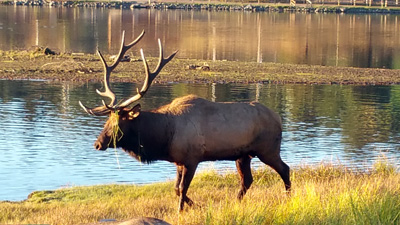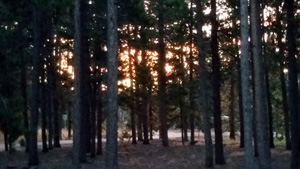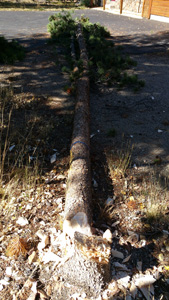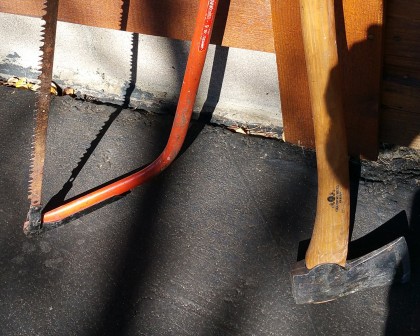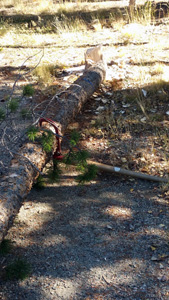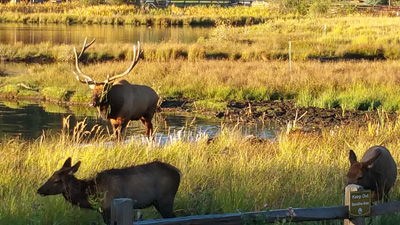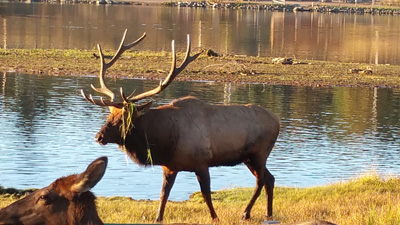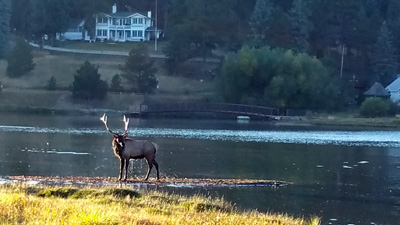Mabon Elk Rut Moon
We are deep into a short and subtle season, the mountain fall. Today’s equinox, the autumnal, is not so relevant here on Shadow Mountain as the second harvest holiday. It finds no fields of corn, wheat, beans ready for reaping.
This does not mean Mabon, the pagan season between Lughnasa and Samhain, the other two harvest holidays, is not distinctive. Hardly. The early signal, as it is everywhere in temperate latitudes, is the changing of the sun’s angle as it descends from its northern zenith toward its southern nadir reached on the winter solstice. At some point in August, usually mid-August, the change in the sun’s position becomes noticeable and kicks up in memory high school football, back to school, leaves changing color, temperatures cooling. This is a nuanced moment, easily missed if life is too busy.
By Labor Day the new season accelerates with the temperatures actually cooler, back to school ads in the Sunday paper and, here in the mountains, the first brief flashes of gold. But the colors never broaden their palette. The fall signal is gold amongst the green. Right here on Conifer, Black and Shadow Mountains, the mountains we see everyday, the aspen groves are small and convert only patches of mountainside, but the effect is startling. What have been all summer ziggurats of green, uniform up and down, now are decorated like Christmas trees, one of those flocked trees with only gold ornaments.
The meadows tucked into canyons and valleys are a beautiful straw color, topped sometimes with a reddish furze. The season of desiccation, ignored by the dominant lodgepole pines, happens, though its reach is not nearly total, as it mostly is in the deciduous forest lands of the midwest.
The animals. Here the equivalent of the blazing colors of maples and oaks is the elk rut. Architectural wonders, the horns of mature bull elks, wander the mountains perched atop their owners, looking for does. Combat is an ancient, ancient sport here. And, like the medieval tournaments, it is for the hand of the lady. If they had them, the does would probably hand out colorful handkerchiefs and scarves for the bulls to carry into battle.
The mule deer shed their velvet in October, so during the elk rut, most of it, they still carry the moist, blood-rich covering that feeds antler growth.
Black bears are in the midst of a caloric imperative, their large bodies demanding upwards of 20,000 calories a day to insure they survive hibernation. That means constant searching for food and any disruption in their usual fall supplies of berries and nuts and honey finds them trolling residential areas in the Front Range or down into the Denver metro area. So another sign of fall are the reports of bear home and vehicle invasions.
Breathless anticipation of snow also begins to dominate the news. A couple of inches in Rocky Mountain National Park last week got several photographs on Open Snow, a forecast website devoted solely to snow and, in particular, snow where it can be skied.
Winter does not loom as the incipient oppressor as it does in Minnesota. It’s foreseen with anticipation, like the holidays. Winter is a fourth outdoor season here. An often repeated quote, an advertising slogan probably, is this: There’s no such thing as bad weather, only bad gear.
So fall in the mountains is not the climactic end to a long growing season. No filled silos or grain elevators. Instead it is the time between the heat and flourishing of summer and the cold, snowy time occupied by hibernation on the one hand and bombing down the mountains on the other.


